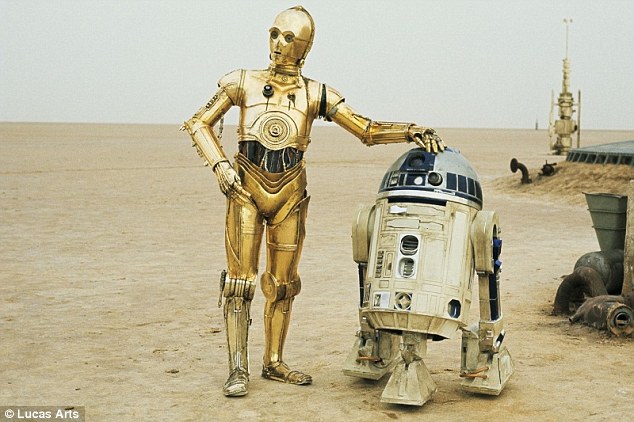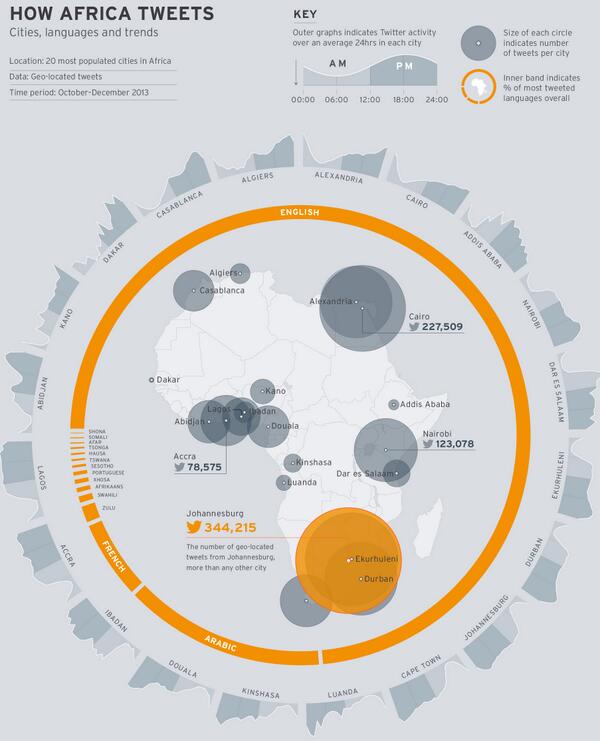Two summers before the 2016 US Presidential election, I was sitting around a bonfire in the wilds of Kenya, lingering in the peace that comes from spending the day amongst the extraordinary wildlife of safari (that’s ordinary for Africa). An intimate gathering of around 15 guests from all continents, the conversation was friendly and centered on the day’s site seeing. Eventually though it meandered into the typical conversationalist vernacular: who you are, where are you from and what do you do.
There was an extended pause as we all gazed into the fire, reminiscing on elephants, lions, and miles of wildebeest trekking the Mara. I was dreamily wondering about the potential of the universe when an unexpected verbal volley shot across the flames.
“So what do you think about Donald Trump becoming President?” Like a grandmother’s awkward question about a pregnant member at the holiday family dinner table, heads turned and all eyes rolled toward to me, the sole American representative.
I wish I could say I easily conjured an interesting and insightful and perhaps even clever reply to demonstrate my thorough comprehension of American politics but honestly the thought in my mind a year before primaries was “… Donald Trump is running for President?”
With Trump’s victory in the history books, it seems pretty obvious now, but until Election Day, Hillary Clinton seemed to be walking away with the prize. As for me on safari a year plus before the election, I had been buried deep in personal and professional malaise for several months. I hadn’t given any thought to the election; those games would begin without me. Obviously, other people – from around the world – were looking into United States politics. At the moment, they were looking at me.
My mind went through several iterations of perspective thoughts, but each was rejected for lack of intelligence or wit. I gave a public-affairs response along the lines that at this point, many people put their hat in the ring early for a variety of reasons. Internally I thought that Trump had a very clever plan to position himself for something more viable to his operations. He was stumping for a cause or a better deal.
[thirstylink linkid=”1602″ linktext=”” class=”thirstylink” title=”Big Data coffee mug”]
Oddly enough, he ended up with becoming President (which means the causes and deals are still a fait accompli).
Elections as the Founding Fathers saw them
Selecting the Executive Officer for the United States was a point of contention for the Constitutional Convention that met in 1787 to further define the Articles of Confederation that had originally sustained the thirteen colonies. As much as the delegates wanted the government to be of the people, they had their doubts as to how much they really trusted the average person capable of making a good decision. They also contended with exactly who counted, women and minorities did not, and the less populous southern states wanted equal representation in electing the chief executive officer. The Federalist Papers argued the merits of the proposed Constitution and specifically #68, arguing how the President should be determined. The compromise is Article II of the Constitution, which spells out the Electoral voting process.
The result is the popular vote tips the hand of the Electoral College. An interesting arrangement, it nonetheless has stood the test of time. Mostly, the people vote the country’s conscious, but on those times where it’s a little dicey, the safe stop comes into play.
Evolution of elections
This year was not the first year that electoral vote did not match the popular vote. Some can recall the famous “hanging chad” recount in Florida between Al Gore and elected President George W. Bush. The Supreme Court had to step in on that one as the very essence of how a vote is counted became questionable itself.
A hundred years previous to that was the 1876 centennial race between Rutherford B Hayes and Samuel Tilden. This – the most contentious race in US history – was settled by the famous (or infamous according to some) Compromise of 1877, which removed the last occupying soldiers in the southern states to end the Reconstruction Era. It also recorded the greatest voter turnout in US history.
The Information Age – This or That
Coming back to the more recent elections, reaching out electronically via the Internet came to play for President Obama’s campaign, which is credited with the first victory utilizing social media. His team developed virtual grass roots capability, breaking ground with the now common practice of A/B testing. The website experts at Optimizely derived the magic that would test six media options and four call-to-action buttons. These web page features examined the subtle differences to check for conversion rates.




The media was video or picture, with President Obama by himself or with family. The four choices for “call to action” buttons seem the same, but what is the difference?
The famous “Combination 11” won.
The winning variation had a sign-up rate of 11.6%. The original page had a sign-up rate of 8.26%. That’s an improvement of 40.6% in sign-up rate. What does an improvement of 40.6% translate into?
Well, if you assume this improvement stayed roughly consistent through the rest of the campaign, then we can look at the total numbers at the end of the campaign and determine the difference this one experiment had. Roughly 10 million people signed up on the splash page during the campaign. If we hadn’t run this experiment and just stuck with the original page that number would be closer to 7,120,000 signups. That’s a difference of 2,880,000 email addresses.
Sending email to people who signed up on our splash page and asking them to volunteer typically converted 10% of them into volunteers. That means an additional 2,880,000 email addresses translated into 288,000 more volunteers.
Each email address that was submitted through our splash page ended up donating an average of $21 during the length of the campaign. The additional 2,880,000 email addresses on our email list translated into an additional $60 million in donations.
https://blog.optimizely.com/2010/11/29/how-obama-raised-60-million-by-running-a-simple-experiment/ boldfaced added for emphasis
Many of us wouldn’t consider 8.26% significantly less than 11.6%, but this simplification exemplifies the extrapolation of data capability when the numbers become Big.
One of the big takeaways that Optimizely upholds is the “knowledgable” staff putting together the website instinctively felt certain features would be the top performers. They were wrong. They learned to accept that data has results that “trump” their gut.
Lessons Learned
- Every visitor to your website is an opportunity. Take advantage of that opportunity through website optimization and A/B testing.
- Question assumptions. Everyone on the campaign loved the videos. All the videos ended up doing worse than all the images. We would have never known had we not questioned our assumptions.
- Experiment early and often. We ran this experiment in December of 2007 and reaped the benefits for the rest of the campaign. Because this first experiment proved to be so effective we continued to run dozens of experiments across the entire website throughout the campaign.
https://blog.optimizely.com/2010/11/29/how-obama-raised-60-million-by-running-a-simple-experiment/
Speaking of Trumping
President Elect Trump was noted a great deal for controversy and one of his earlier campaign comments badmouthed Big Data; however, in the waning months of the run he turned to his son-in-law Jared Kushner to spin the magic of Big Data. (Trump since then has appointed Jared Kushner Senior White House Advisor.) Jared went to a Texas based marketing firm Cambridge Analytica. Untested in political waters, the company instinct was less of an influence. They were using the data. Ah yes, Big Data.
In comparison, the 24 Obama message small data combinations were countable. The Trump messaging system incorporated 4,000 messages read by over 1.5 billion people. Whereas the Obama campaign converted traffic arriving at the campaign website, the Big Data of Trump crawled all of Twitter, Snapchat, Instagram, Pandora and more to pick just the right ad to influence … you.
Like traditional politics, if your mind was made up, no ad would likely change it, but for the swing votes, and states, and Electoral College members, just enough created the tipping point.
So what does this tell us about the US election process?
No matter that that population has gone from an estimated 2.5 million in the original thirteen colonies to over 320 million, each vote does count, and that vote can be influenced, even until the last minute. Although the Founding Fathers worked with a set of social issues and technical capabilities that are quite antiquated, the premise of popular vote backed by the Electoral College has proven evergreen. Through Supreme tests and unforeseen circumstances, the tremendous impact and significance of the Constitution continues the bow wave of global proportions.
Big Data Elections
So how does Big Data influence the well-established process? The first iteration is evidenced in the striking Trump victory. By creating over 4000 messages, the Trump campaign influence individuals as gleaned from their interactions with friends, family, colleagues and strangers via a suite of online platforms. The targeting itself is not a new concept; the ability to learn detail about your preferences and match them to a more specific message for you is what is evolving.
Future capability will be even more surgical. A study of your patterns will provide a unique message only you will see, not just one in four thousand. It will be oh-so-compelling and it will be timely. Pandora kept repeating the same message about Obamacare to me, which makes me question the targeting capability. It’s a subject I’m not passionate about either way so I doubt its efficacy and wonder at its origin. Future Big Data political influence will know your personal call to action, what makes you click the button in its favor.
“Big Data, Who Should I Vote For?”
As always until technologically replaced, there’s an app for that. Whereas the campaigning is the push, an app is the pull part of Big Data. Today’s voting apps provide information about the candidates, which is good, but they don’t utilize Big Data. The Big Data Voting app first understands all your personal data profile: social media, work habits, employer and pay history, geotags of your life. The app crawls the political schema to search the candidates and party habits and messages, even determining where the rubber doesn’t meet the road (do they do what they say?).
The app doesn’t tell you for whom to vote, but it does profile your activity against the candidates: what specific messages and actions truly align with who you are and what you do.
The app is even more effective at the levels below the Presidential race. The app will better sort out the voting records of constituents to let you know how their actions align with your profile proclivities. Digging down even further, it would provide a more robust picture of those local officials that this election you might not have heard of before seeing the ballot. Positions like school board members and county officials and judges have tremendous impact on the tactical level of our lives, and yet we rarely have much information on their backgrounds or voting records. (Or we don’t take the time to search the various resources for that information.) The app would do the heavy lifting to provide a decision dashboard. It’s less emotion and more metrics.
Big Data Creates the Slate
The rhyme and reason for individuals to pursue an elected position is far from a perfect process. Like even our Founding Fathers, the credentials for running for office have more to do with whom you know and how much financial capability you have than actual capability for executing the duties.
Further in the future, Big Data would start the election process by picking potential candidates out of the crowd. A Big Data candidate proposal process would cull the general populace to find individuals with demonstrated good character and decision capability.
Big Data isn’t Big Brother though. At the polls, it doesn’t vote for you. It rises above the emotion and motion of the crowd to provide a better understanding of what your habits and proclivities actually mean in political perspective.
End of Day
The prescience of the US Founding Fathers is almost unfathomable. The Founding Fathers took great care and incredible insight to vision a government that would live in perpetuity – through a magasmaum of unforeseeable technological, social and political changes.
Perhaps had they known all the challenges ahead, it would have presented an impossible undertaking. They didn’t even have electricity. Consider the cascading inventions, capabilities and perturbations from that singular effect. I’m glad they didn’t have any idea how many ways the world would change or how many times their work would be challenged; otherwise, the Founding Fathers may have just stayed home.
The morning of the 2016 election held no obvious portent to one of the most unforeseen comeback victories in the US. I made my coffee hurriedly that morning. Although my employer had no qualms about my being late, I still had to fit voting into the day’s routine. It wasn’t a significant weather day, no hailstorms or raging battles or extremist groups to deter turnout. I had to travel a torturous (joking) four blocks to reach my voting location. The only army there was volunteers (some paid) that made the process about as efficient as possible for an ad hoc group of strangers enforcing the rules. How easy is that!
I thought of that night in Kenya again, realizing how my single vote made a difference not just in my country. As small as the planet becomes in a Big Data world, all the more so every one counts.








![By Peter H. Wrege (Own work) [CC BY-SA 3.0 (http://creativecommons.org/licenses/by-sa/3.0) or GFDL (http://www.gnu.org/copyleft/fdl.html)], via Wikimedia Commons](https://colettegrail.com/wp-content/uploads/2016/02/african_forest_elephant-e1454862777780.jpg)

